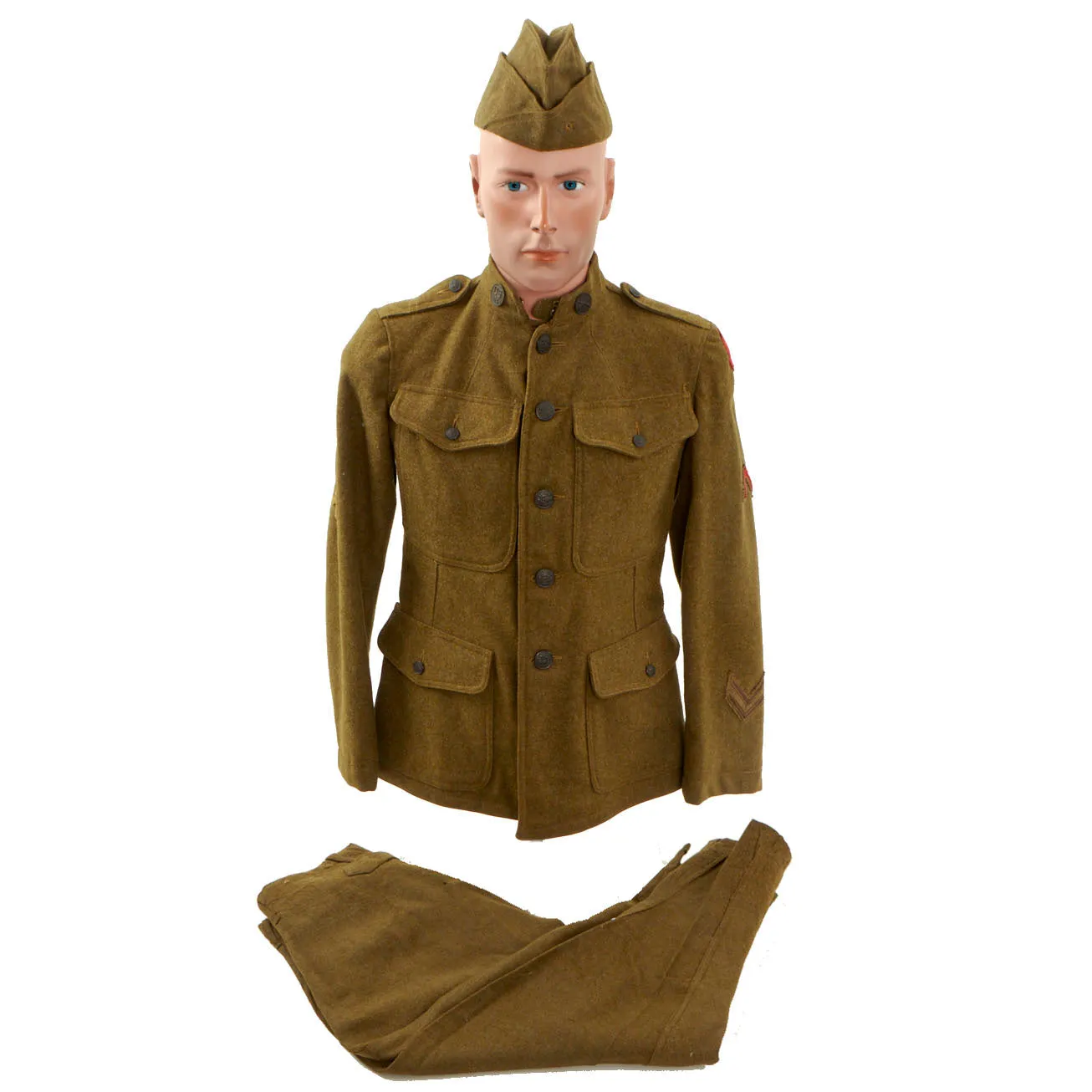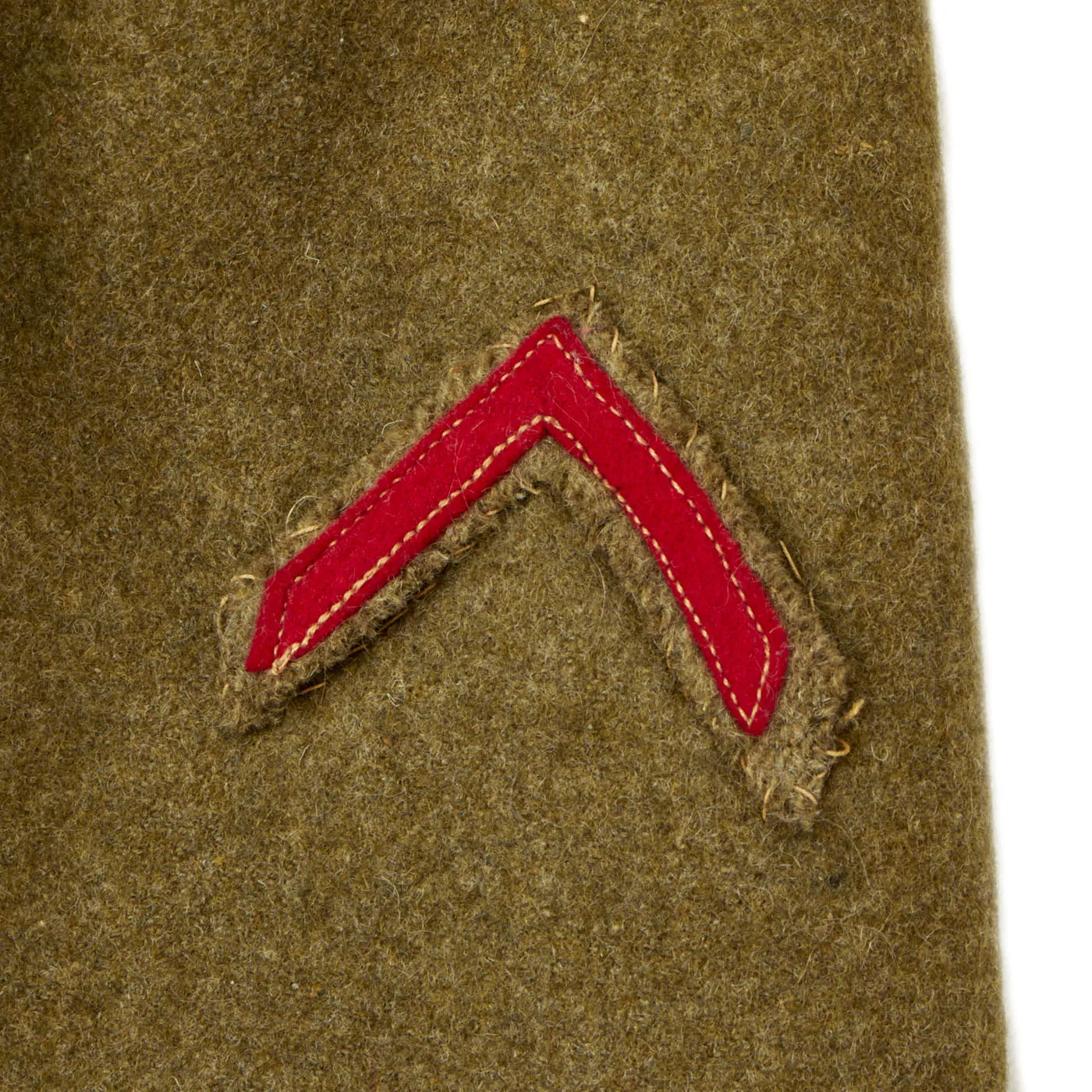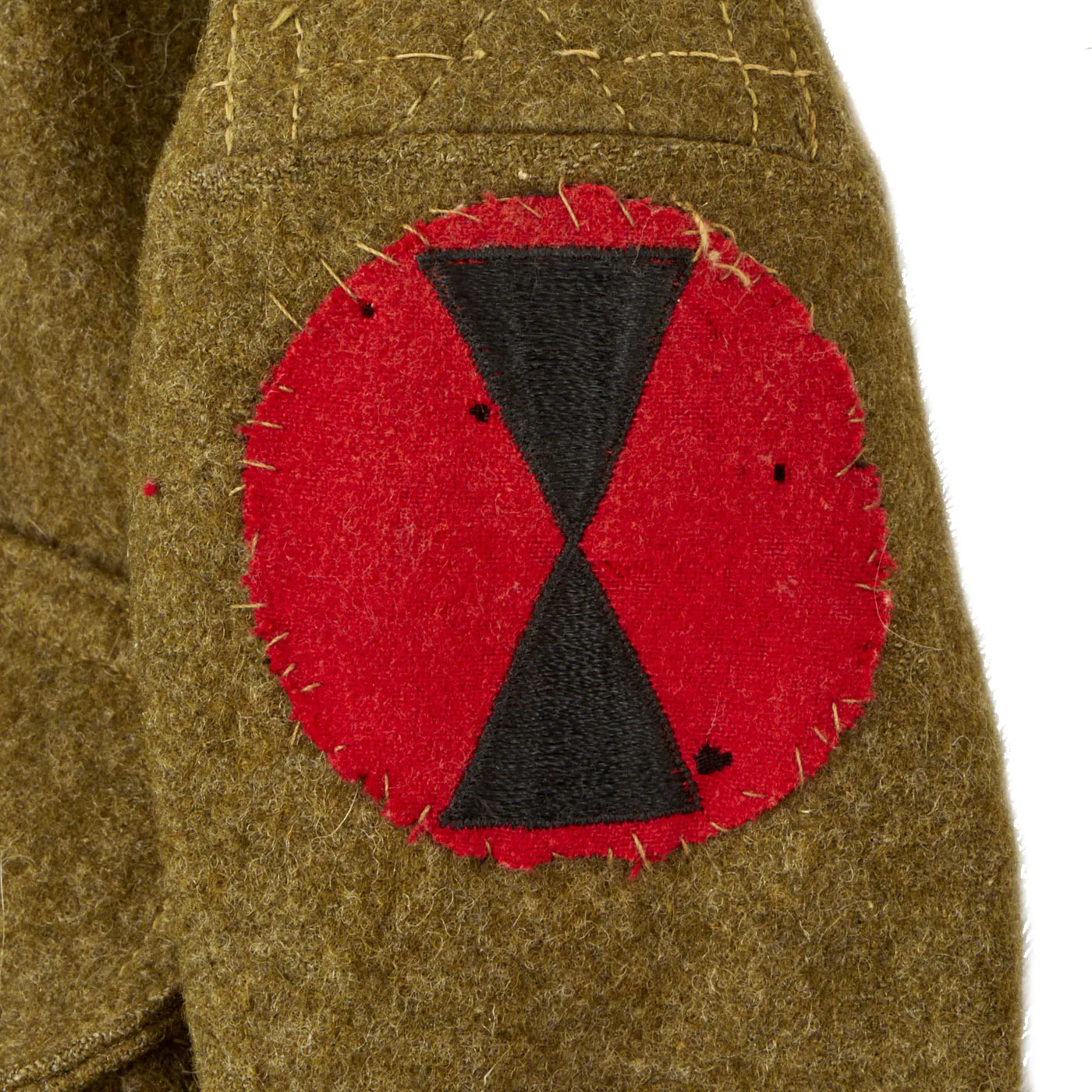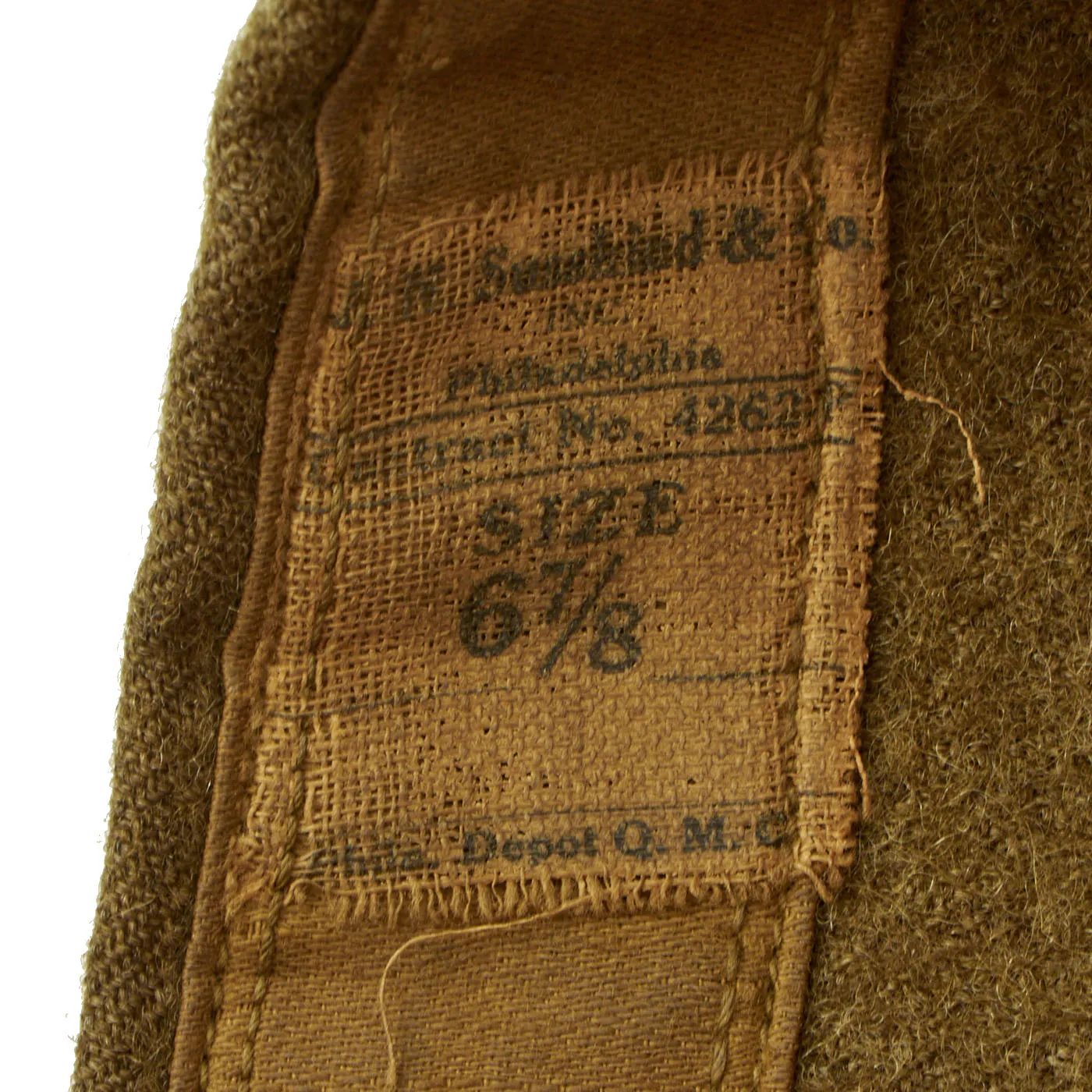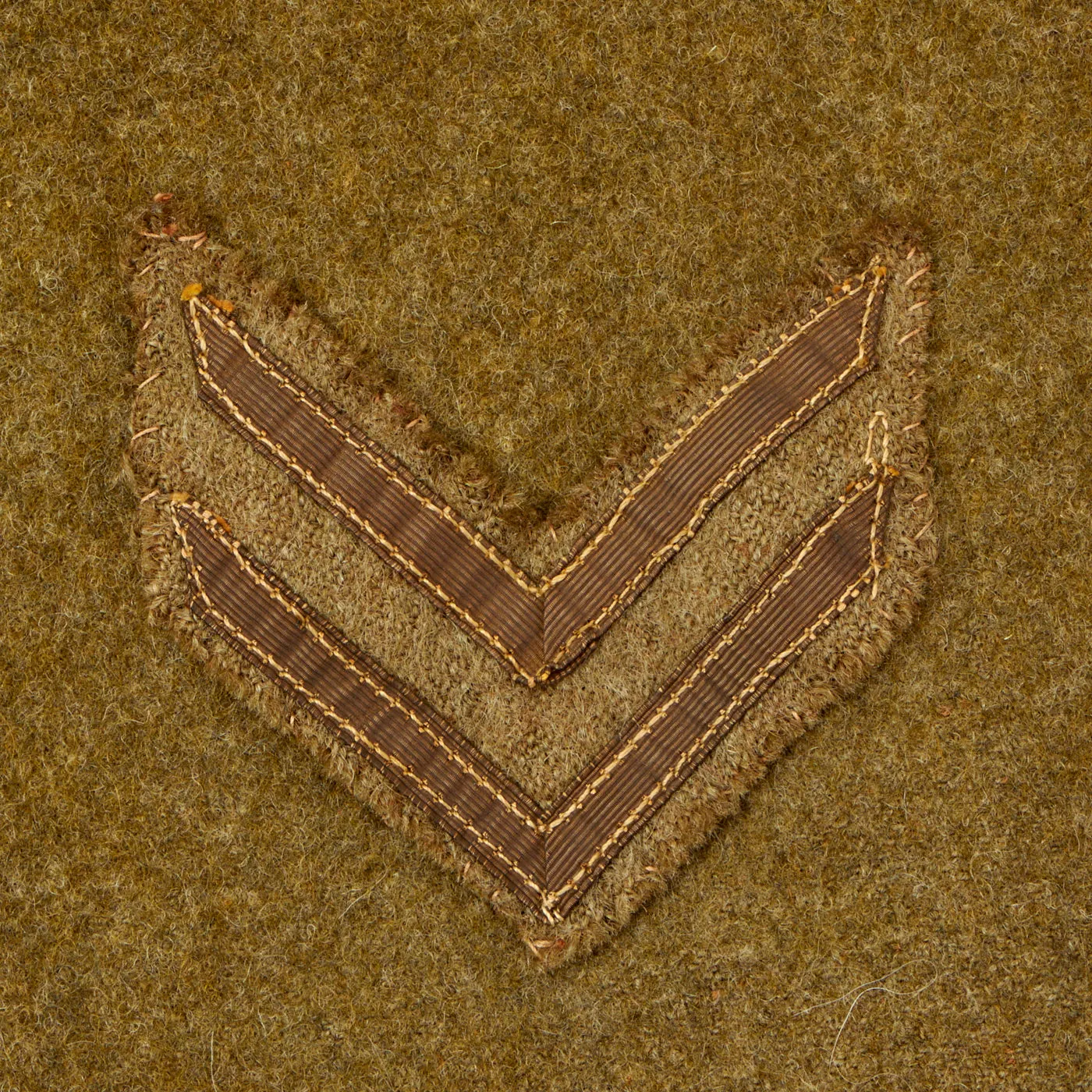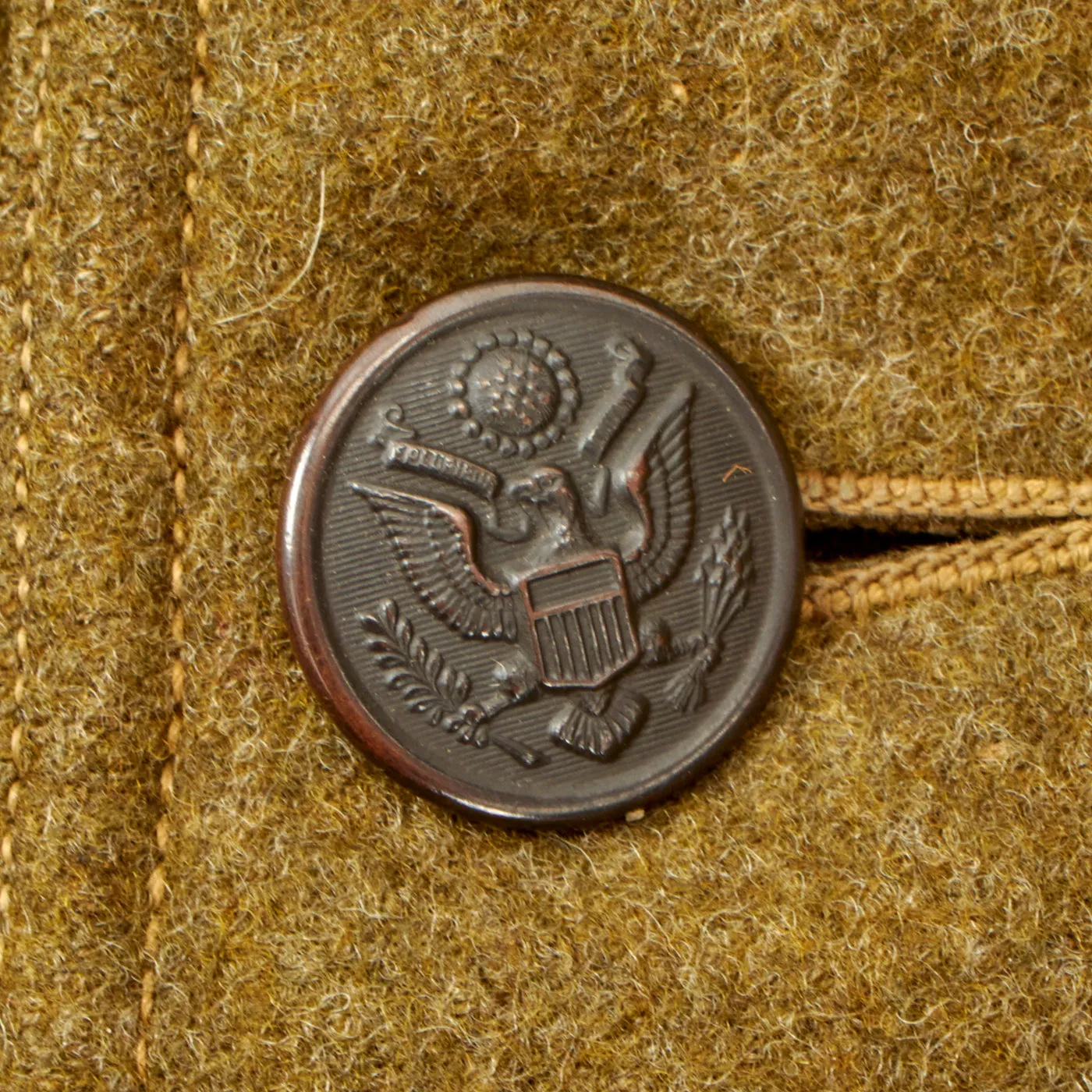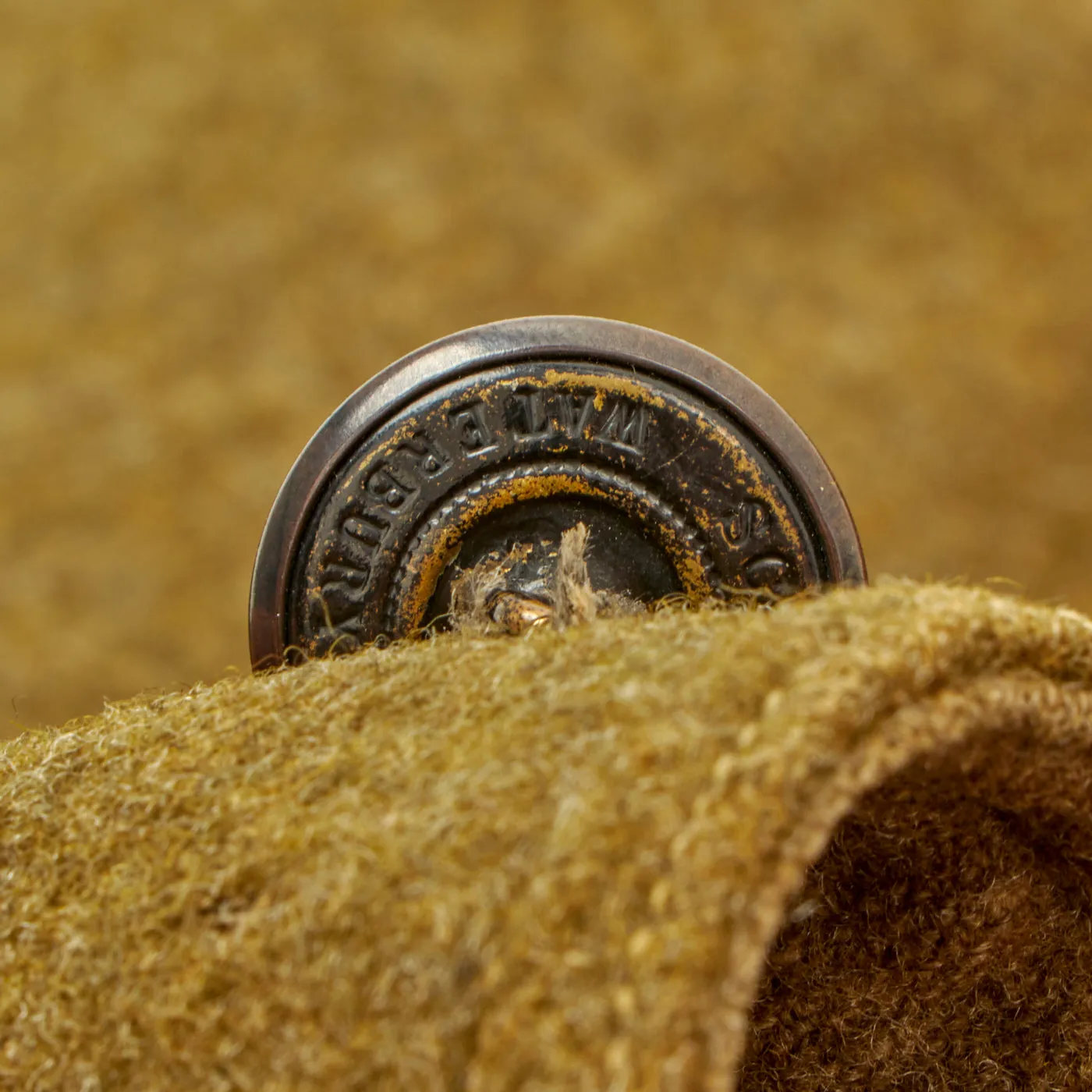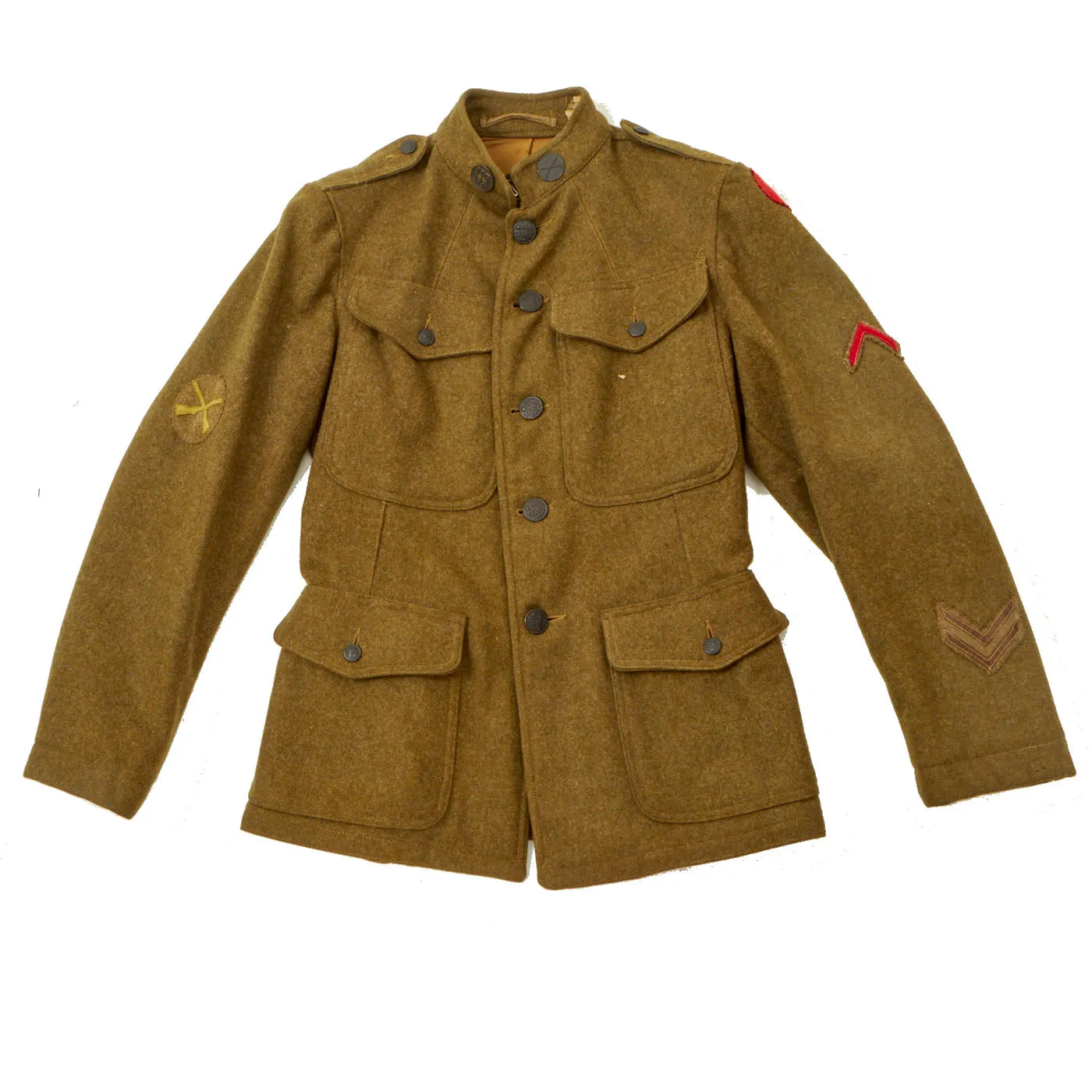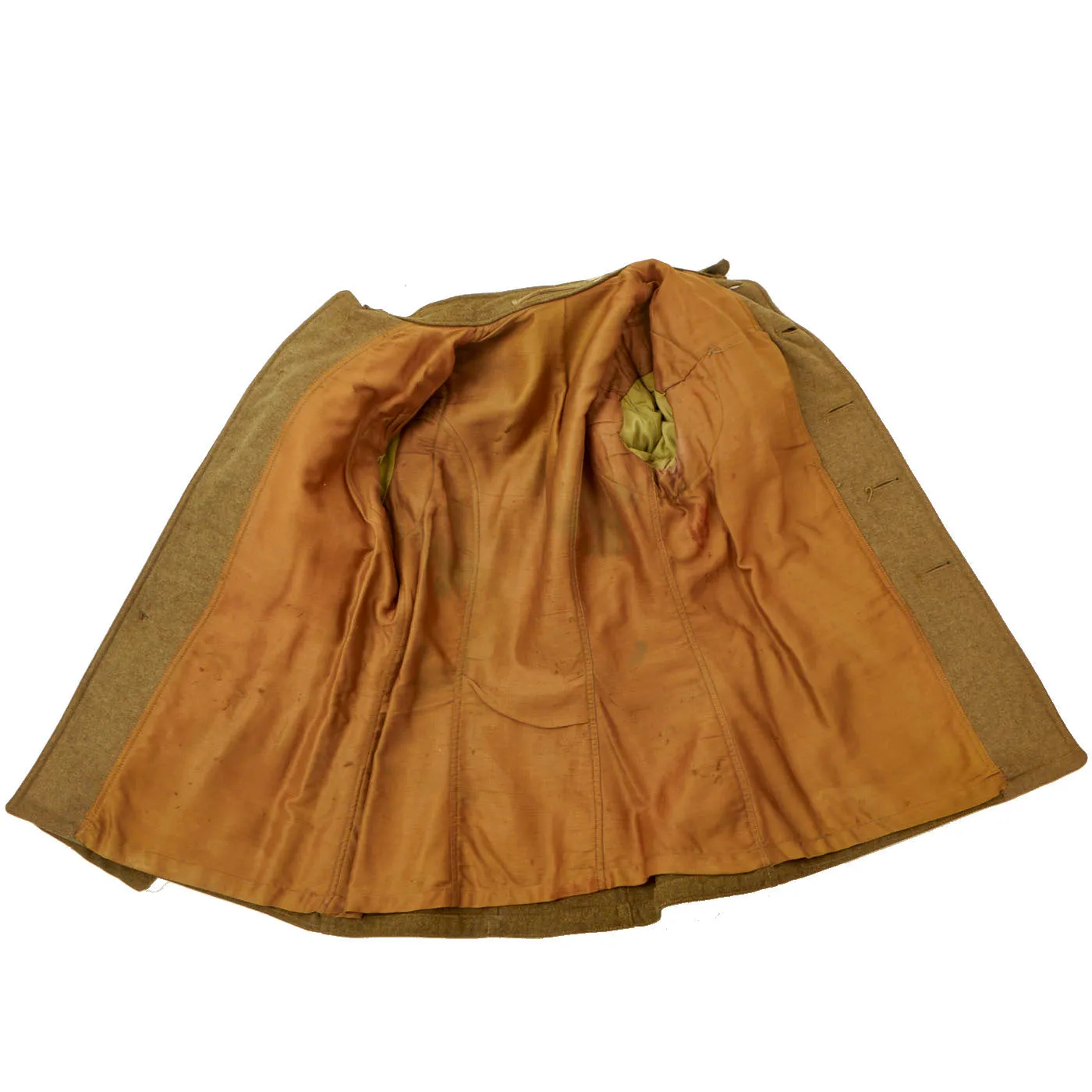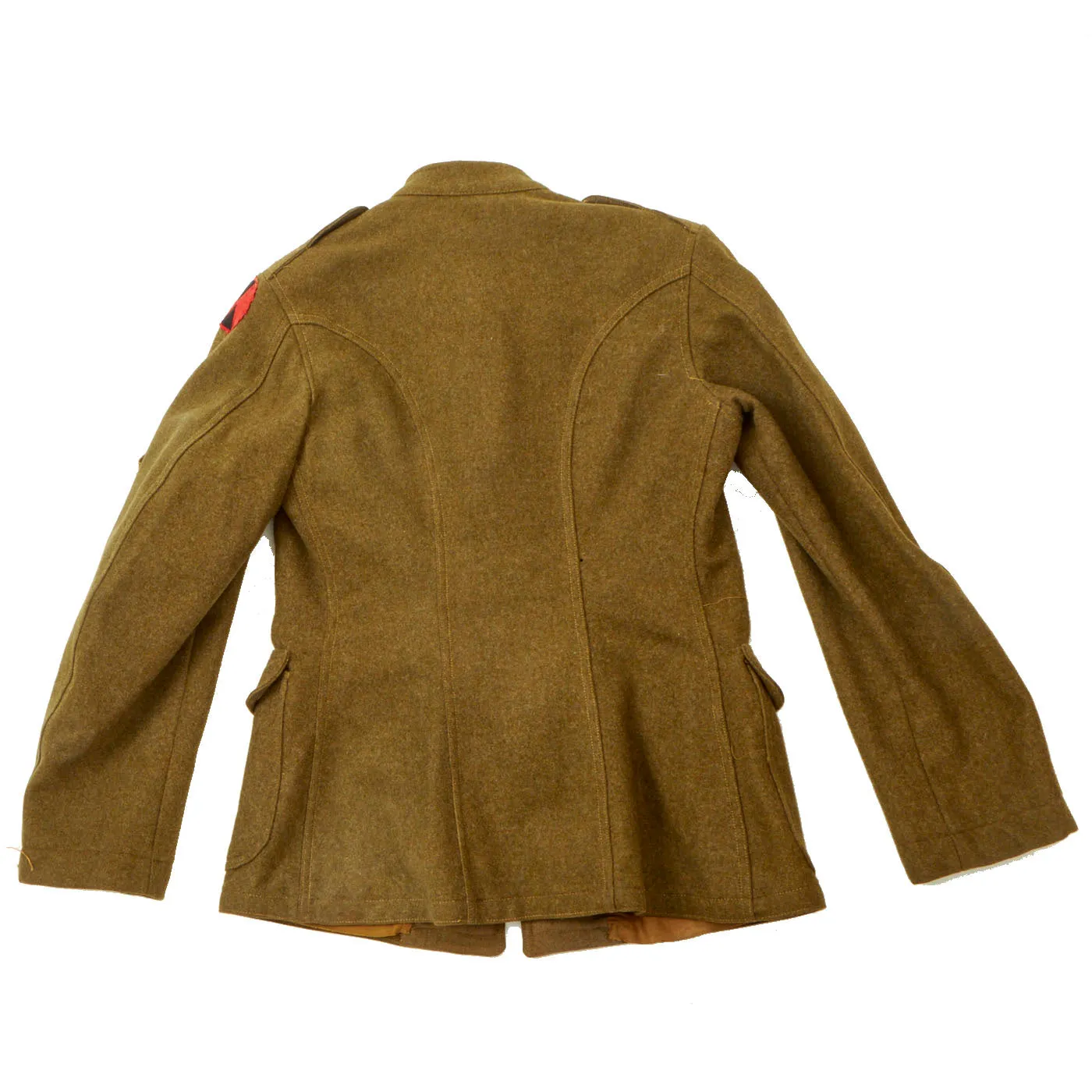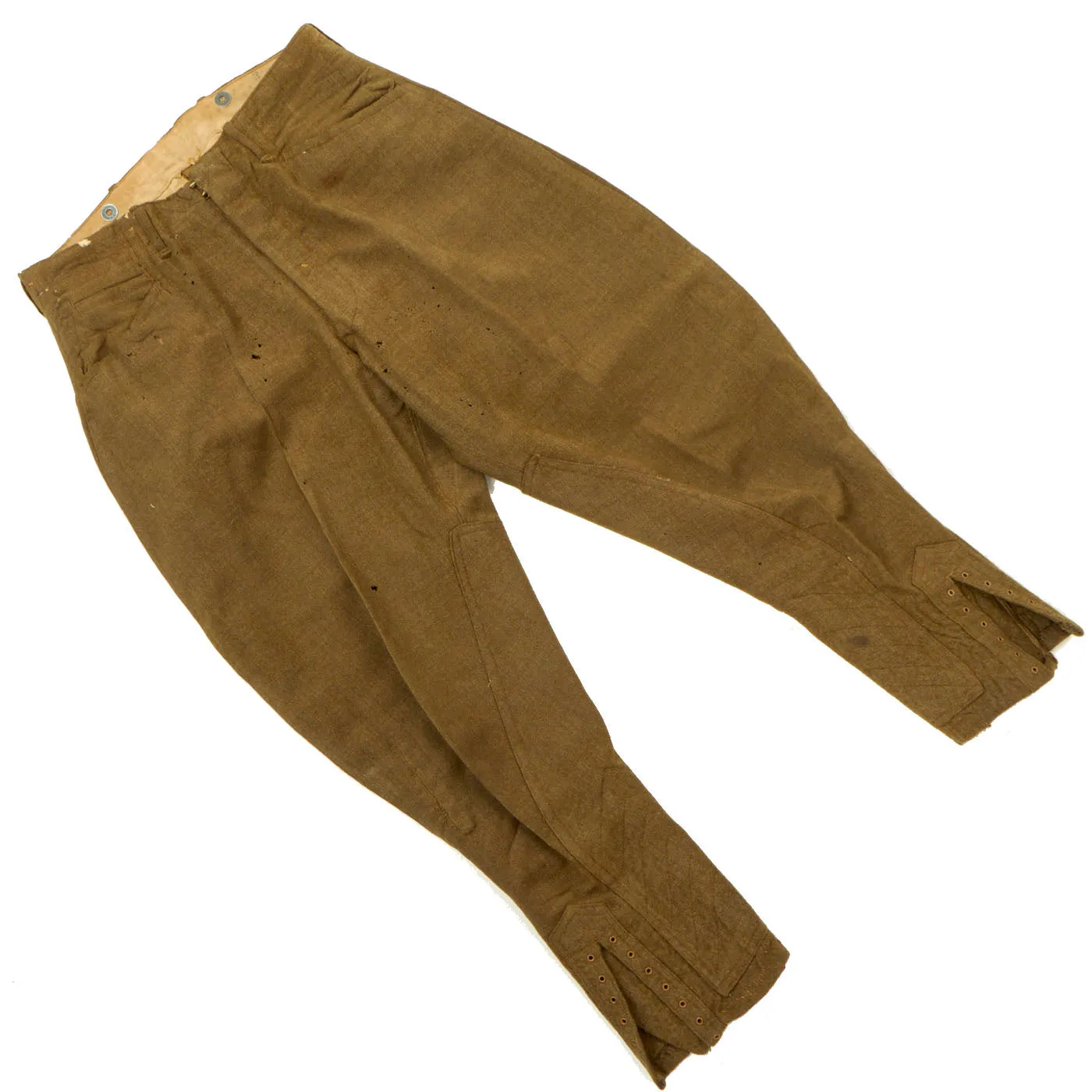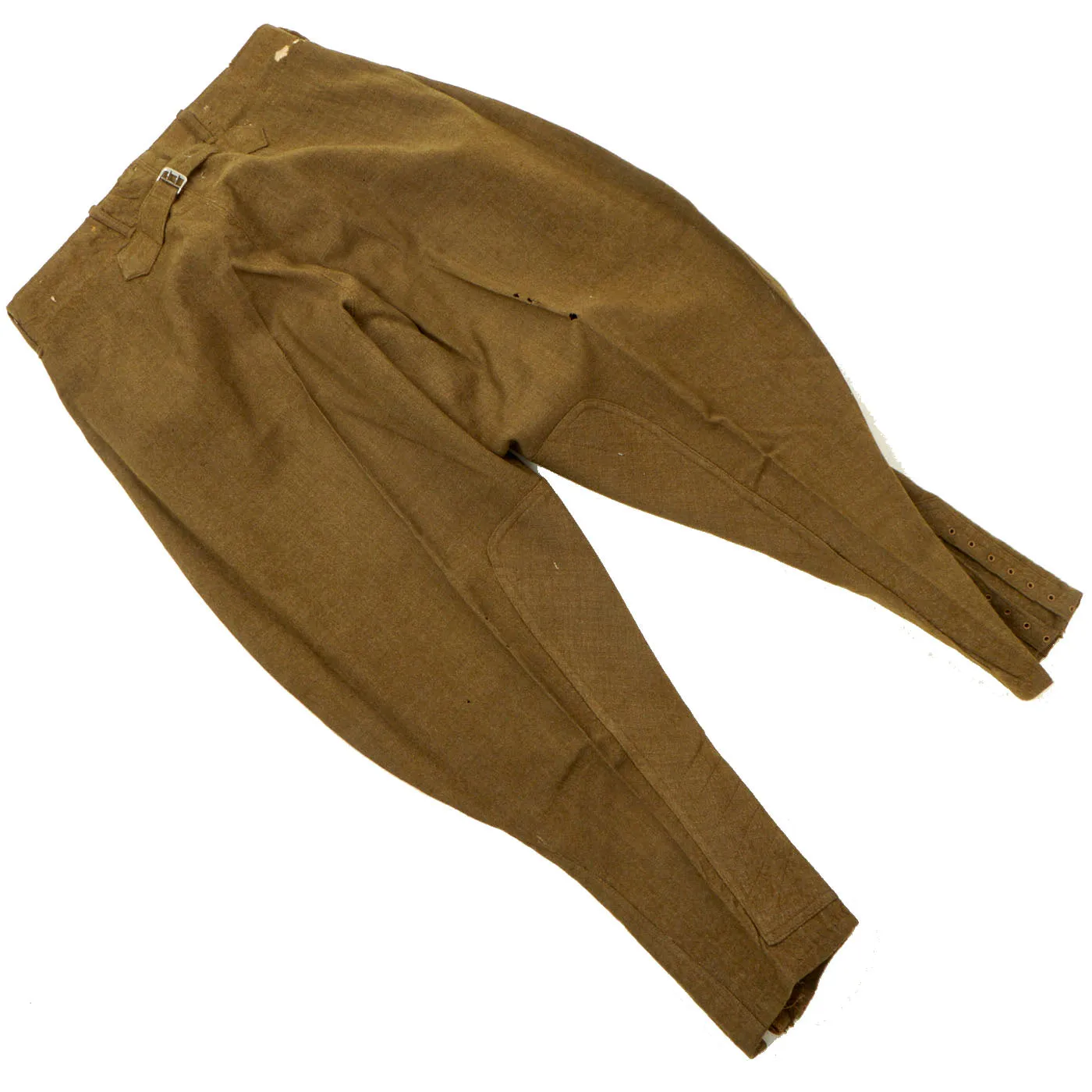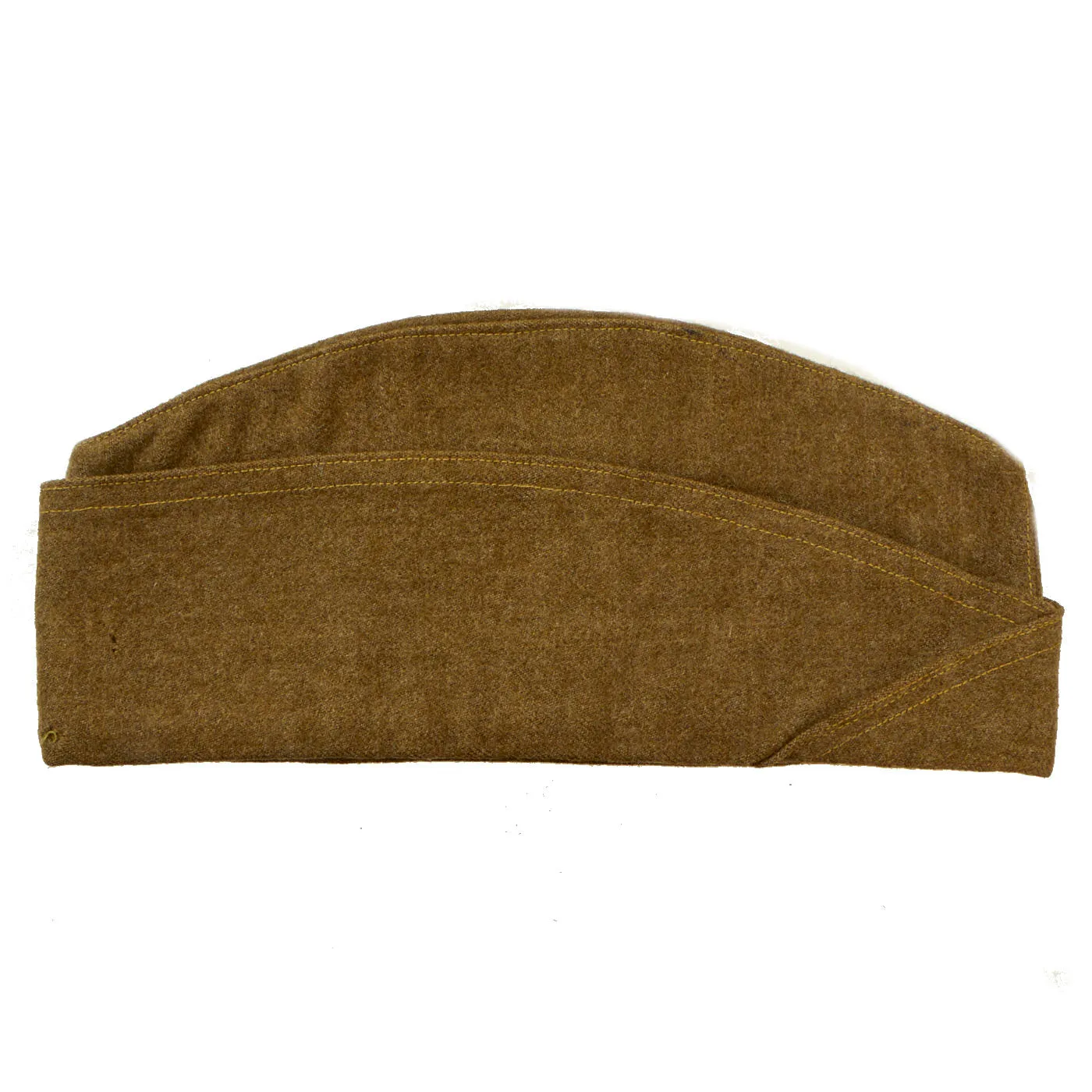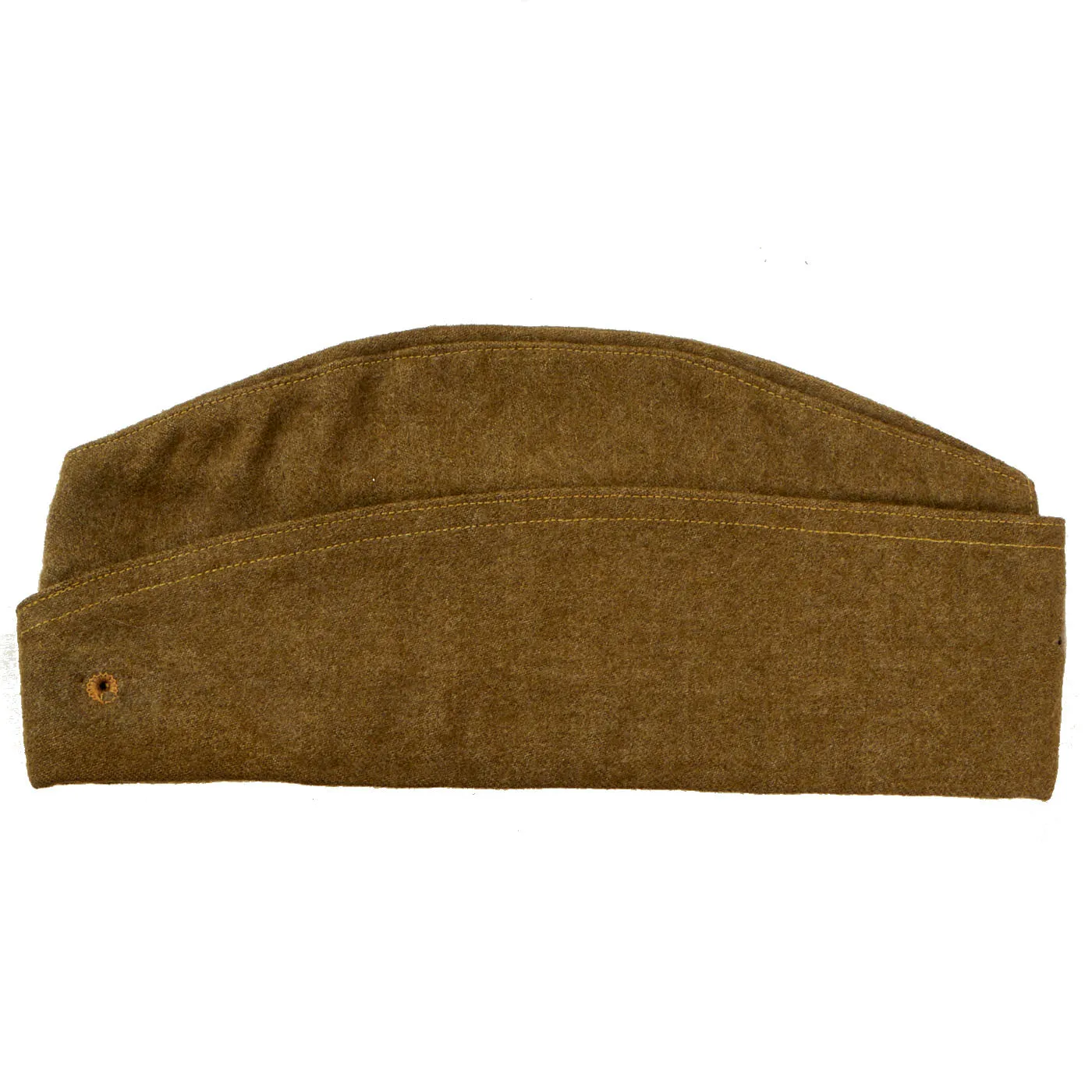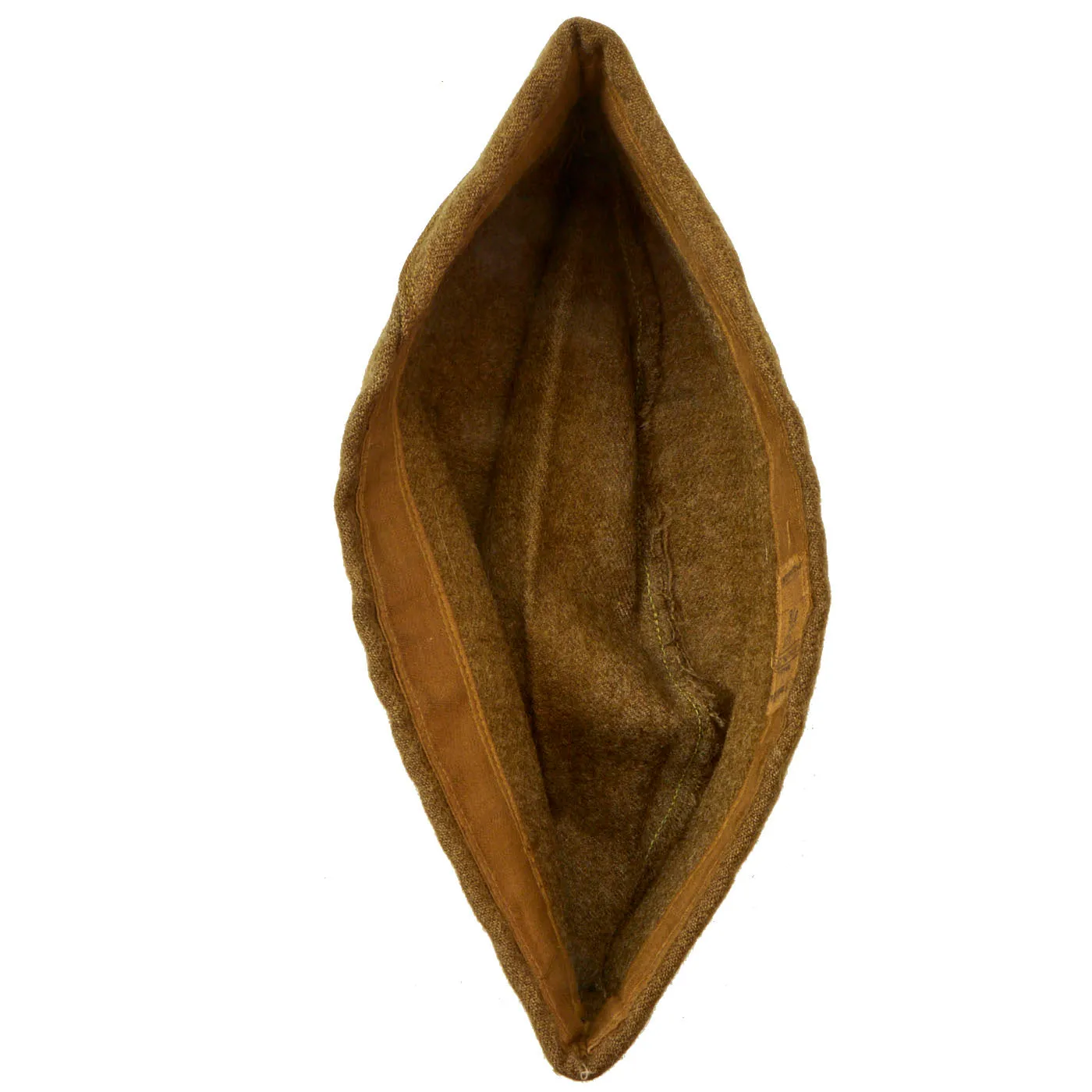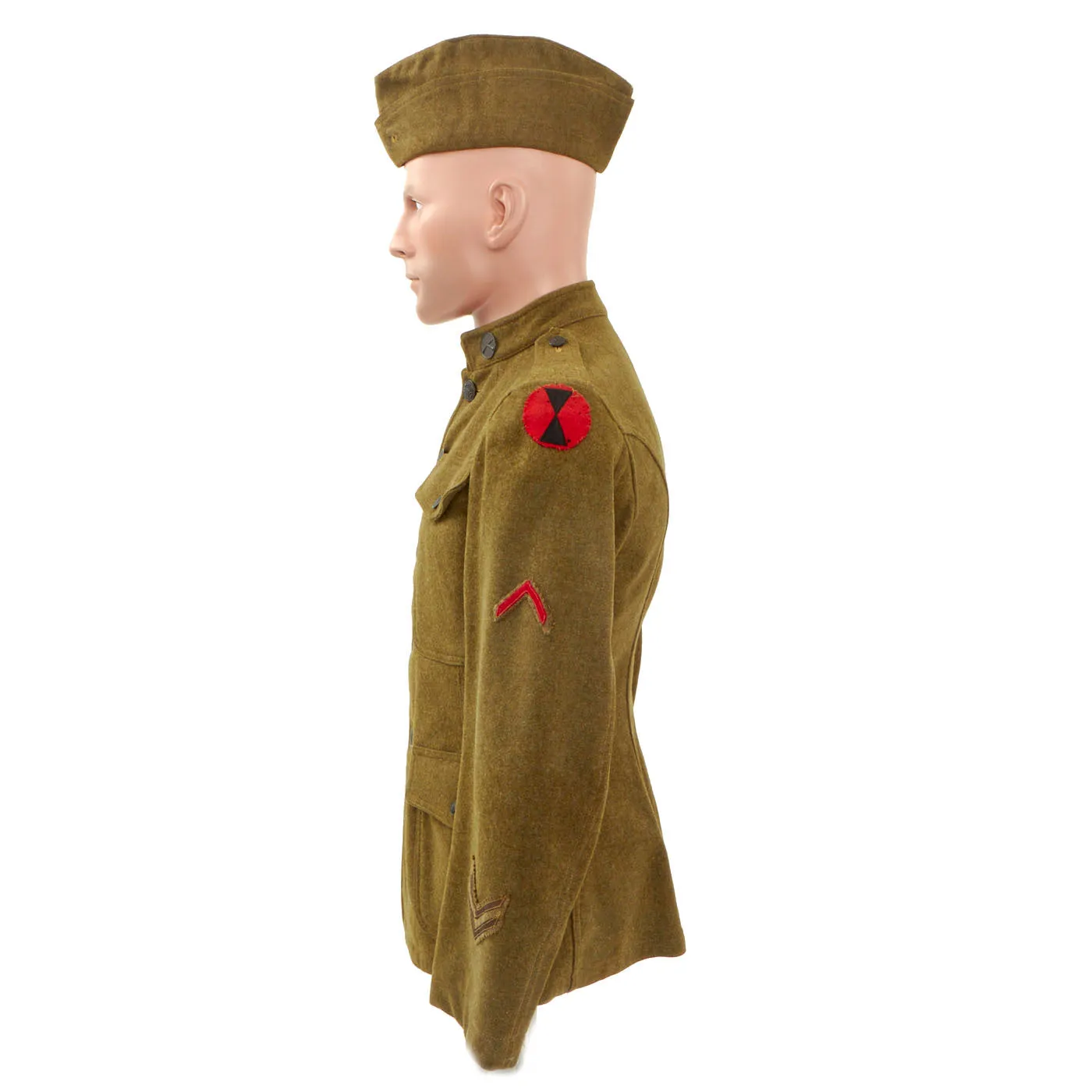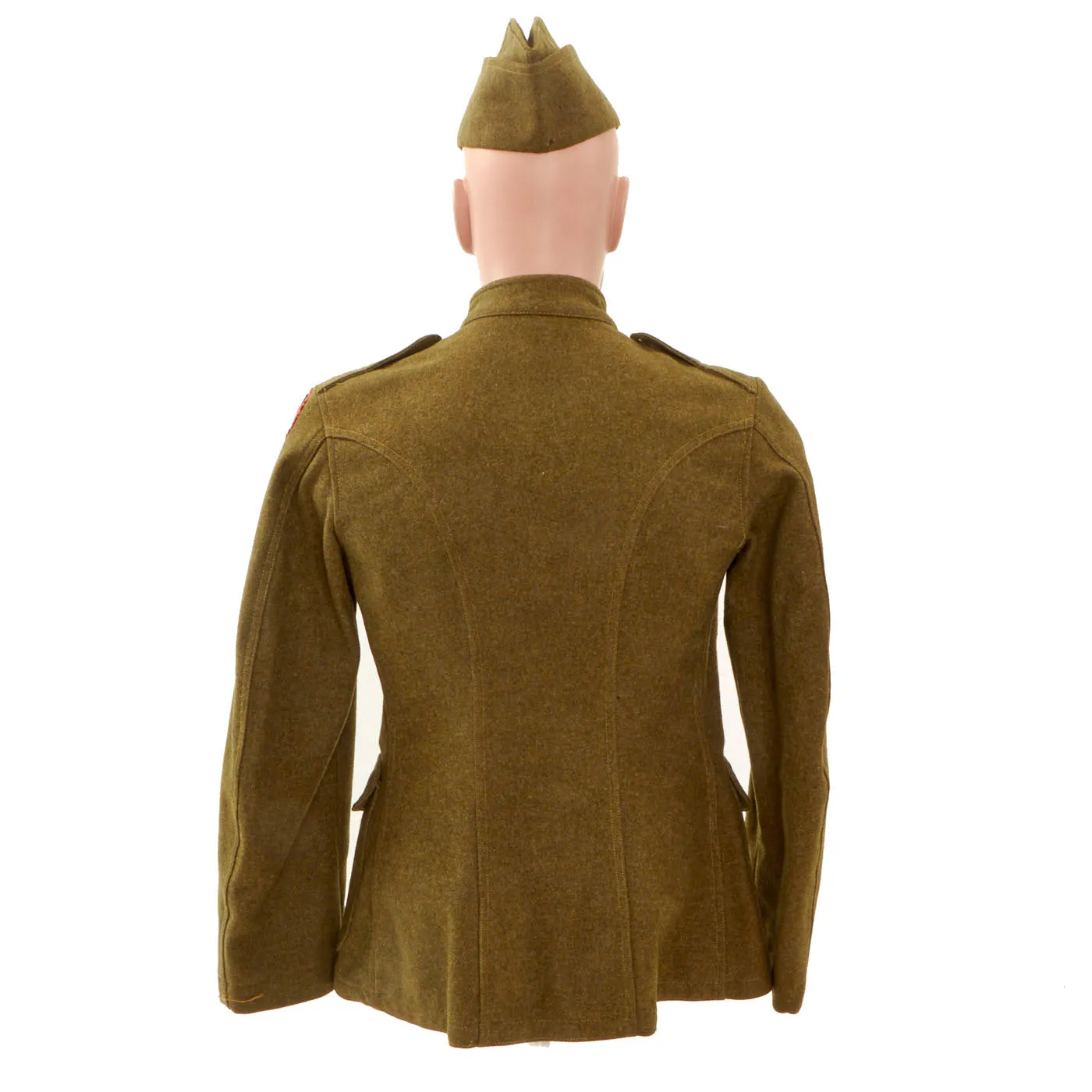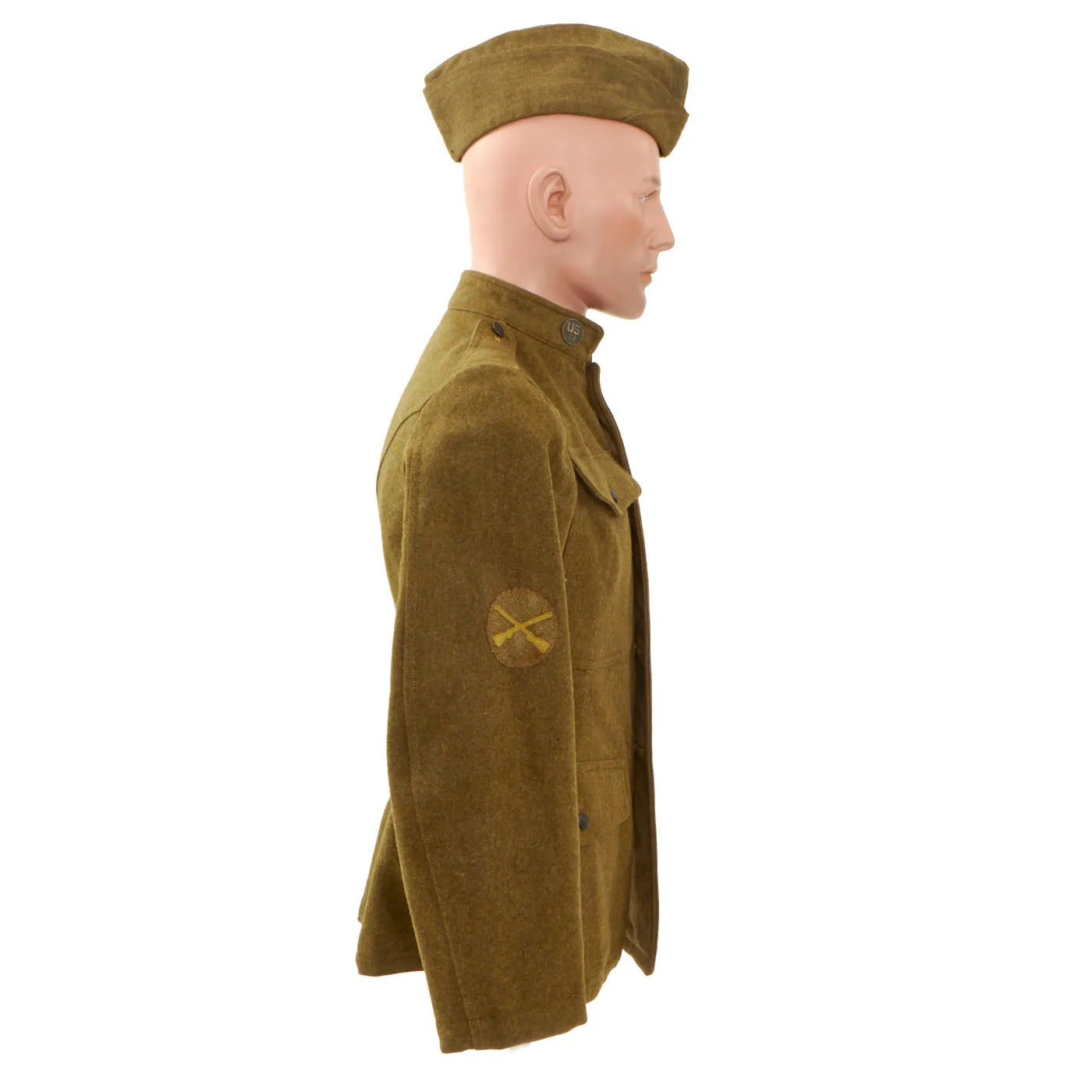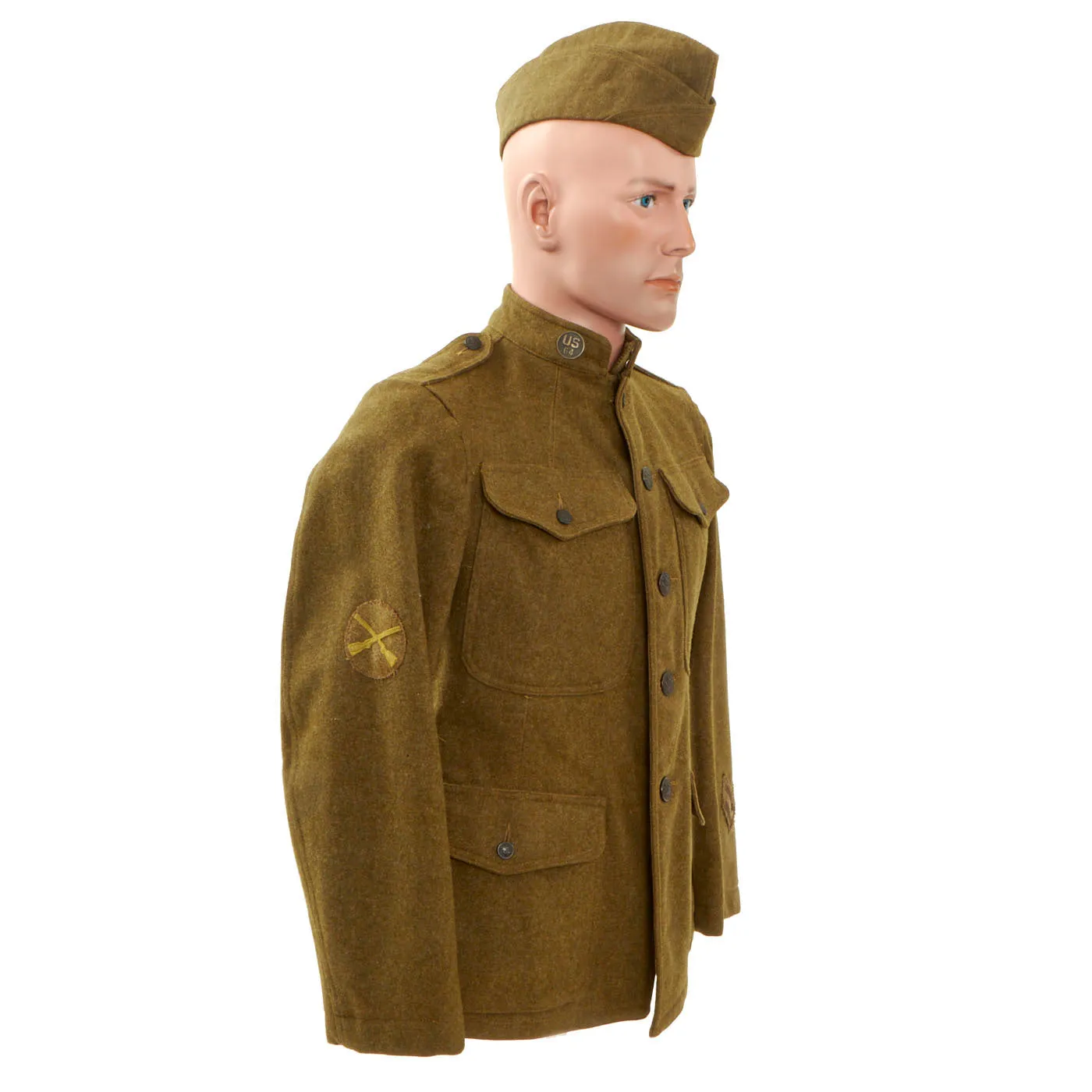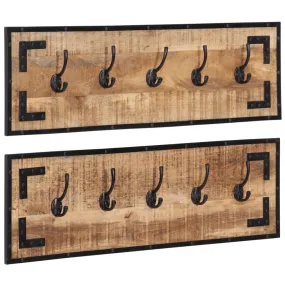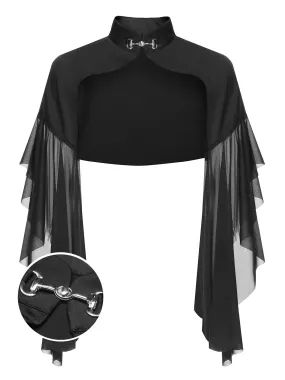Original Items: Only One Set Available. The 7th Infantry Division was activated on 6 December 1917, exactly eight months after the American entry into World War I, as the 7th Division of the Regular Army at Camp Wheeler, Georgia. On 18 July, the division moved to ports of embarkation as it prepared to deploy to Europe as a part of the American Expeditionary Force (AEF). The unit arrived at Hoboken, New Jersey and in New York, via Camp Merritt, where additional replacements joined the unit. The majority of the unit sailed to Brest, France. The 7th Support Trains and the 7th Training Headquarters along with the military police sailed for Bordeaux, France. The units began to arrive in France on 26 July with the last units arriving on 3 September 1918. Most of the division sailed to Europe aboard the SS Leviathan.
This uniform set is named to a Private First Class Wright and his name can be found written on the inside band of the trousers. Unfortunately due to how common the name is, we have been unable to pinpoint as to which soldier this set belonged to. That does not mean that you will not be able to! This is a wonderful research opportunity.
The set consists of an overseas cap, jacket and pants. The tunic features an infantry collar disc as well as a 64th Infantry Regiment disc. The 64th was assigned to the 7th Infantry Division 16 November 1917. On the left sleeve you will find a lovely red felt and black thread “hourglass” division patch, a Private First Class chevron andon the lower portion 2 overseas stripes denoting 1 year of service in a combat theater. On the right shoulder is the round “PFC” infantry crossed rifles patch. The tunic is in lovely condition with minor moth nips throughout.
The trousers are stamped as a size 32 waist and are free of extensive damage, however there is quite a bit of moth nips throughout. The drawstrings at the bottom are missing and the only other marking is the name Wright which is written in blue ink on the inside waistline.
Also included is a lovely green wool overseas cap to complete theser. The manufacturers label is still present and states the size is 6 ⅞.
This is truly a beautiful uniform set that belonged to a young man who served with the 7th Infantry Division during the Great War. Comes ready to research and display!
While on the Western Front, the 7th Division did not see action at full divisional strength, though its infantry and reconnaissance elements did engage German forces. On 11 October 1918, it first came under shell fire and later, at Saint-Mihiel, came under chemical attack. Elements of the 7th probed up toward Prény near the Moselle River, capturing positions and driving German forces out of the region. It was at this time that the division first received its shoulder sleeve insignia.
From the period of 10 October until the end of the war on 11 November, the division, minus their artillery, occupied and conducted local engagements in the Puvenelle Sector (Lorraine). On 10 October 1918, the division relieved the 90th Division on the front with a front line from Sablière, Vandières (incl), Côte 327, north edge of Bois des Rappes, la Souleuvre Fme, 1½ km south of Rembercourt-sur-Mad. The 92nd Division was on the right and the 37th Division was on the left. On 16 October, the 28th Division moved in on the left of the 7th Division. Several days later, on 23 October, the 92nd Division (VI Corps) occupied the sector on the. Three days later on 26 October the sector was reduced by moving the east boundary to a line between Villers-sous-Prény and Prény (both incl). Elements of the 92nd Division relieved the 56th Infantry Regiment. On 29 October, the sector was extended west to a line from Xammes to Charey, with the 64th Infantry relieving elements of the 28th Division, on a front along the eastern edge of Bois de Blainchamp, northern edge of Bois de Hailbat, eastern edge of Bois du Rupt, northern edge of Bois de la Montagne.
During this period in early November, the 7th Division began preparing for an assault on the Hindenburg Line as part of the Second Army. The division launched a reconnaissance in force on the Voëvre plain, but the main assault was never conducted as hostilities ended on 11 November 1918 with the signing of the Armistice with Germany.
On 1 November the division conducted local attacks and established outposts at Bois de Trou-de-la-Haie and Bois de Grand-Fontaine. From 9 November through 11th the division executed local attacks and made gains along the front. On 9 November the division assumed temporary occupation of a hill west of Prény. On 10 November, Hill 323 (1 km southeast of Rembercourt) was occupied. On 11 November, the line was established from 310.2 to 287.1 in the Bois de Grand-Fontaine, the quarry near 278.7, west of Rembercourt, and the small woods ¼ km south of Mon Plaisir Fme.
During its 33 days on the front line, the 7th Division suffered 1,709 casualties, including 204 killed in action and 1,505 wounded in action and was awarded a campaign streamer for Lorraine. The division then served on occupation duties as it began preparations to return to the United States.





